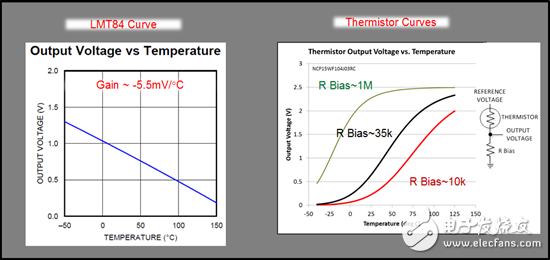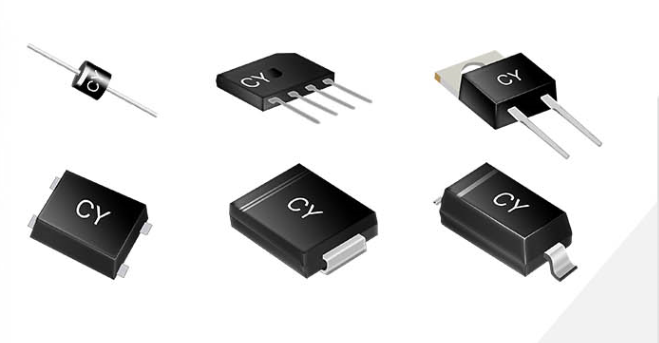When driving through a number of major climate zones in a small driving range, you need to thank the car engineers for their work. In California, for example, the temperature in Death Valley will reach +55 ° C, and after a few hours, when you drive to Mono County, the temperature will be as low as -35 ° C. You can think about it, in order to cope with these large temperature changes, the electronic components in your car and the car must be excellent in heat resistance - the most common is the extreme working conditions inside the car body and the hood The next application.

There is no doubt that the automotive industry is increasingly demanding the reliability of integrated circuit (IC) components that comply with the AEC-Q100 standard. Electronic rearview mirrors or miniature, sealed camera modules that are exposed to sunlight throughout the day may require AEC-Q100 Class 1 components up to 125 °C. The engine control unit under the hood is increasingly requiring Class 0 components, which can be rated for up to 1000 hours in environments up to 150 ° C – and sometimes it is not enough. If there is a component that must maintain accuracy in these extreme temperature environments to protect the system from damage, then this component is definitely a temperature sensor. Accurate temperature information allows the processor to temperature compensate the system so that electronic modules can optimize their performance and maximize their reliability, regardless of the driving conditions.
IC temperature sensors are in the same market category as other sensing technologies such as thermistors, resistive temperature detectors (RTDs) and thermocouples, but when needed over a wide temperature range, such as the AEC-Q100 level 0 range (-40 From °C to 150°C), integrated circuits (ICs) exhibit certain advantages when achieving good accuracy. First, the accuracy limits for IC temperature sensors given in the datasheet are in degrees Celsius and are values ​​over the entire operating range; conversely, a common negative temperature coefficient (NTC) thermistor may only specify a single Resistance accuracy at temperature points in percent. Then, when using the thermistor, you need to carefully calculate the overall system accuracy over the entire temperature range. In fact, be careful to check the operating conditions that specify the accuracy of any resistor. For example, an IC with a common rating will give an accuracy over the supply voltage range, not just a specific voltage.
Another advantage is that the IC temperature sensor is highly linear, which minimizes the need for software compensation. Figure 1 is a linear comparison between an analog IC temperature sensor and a thermistor.

Figure 1: Linear comparison between an IC temperature sensor and a typical positive temperature coefficient (PTC) thermistor
When choosing an IC, keep in mind that they come in many different types - each with its own advantages for different automotive applications.
Analog output. Devices such as the LMT84 (available in AEC-Q100 level 0 devices) are simple, 3-pin solutions; these solutions offer multiple gain options to best match your chosen analog-to-digital converter (ADC) Matching, this also allows you to determine the total resolution. In addition, compared to thermistors, this device maintains lower operating power over temperature, which is another advantage. This means that you don't have to make concessions in terms of power consumption for better noise performance. Analog devices are cost-effective solutions for infotainment systems.
Digital output. A common interface for applications under the hood is the SPI. Devices such as the LM71 (available in AEC-Q100 Class 0 devices) feature a 13-bit resolution in a small SOT-23 package, and the simple and reliable SPI interface is the advantage of this device. Other devices such as the LM95172 offer up to 16-bit resolution, additional features, and package options rated up to 200°C. Temperature sensors similar to these devices are common in powertrains, as well as in chassis applications such as transmission control and electronic brakes. I2C devices such as the TMP102 that meet Level 1 applications can support infotainment and dashboard applications that require a micro solution.
Temperature Switches. Many TI automotive switches integrate thermostat functions and analog outputs. They provide a simple, reliable over-temperature warning. The simulated temperature value is used to indicate the operating status of the system in advance. Before the temperature reaches the critical value, you can adjust the system operation to a limited working range according to this value. By using the LM26LV , the headlamps benefit from a simple, reliable factory preset threshold. Due to its harsh operating environment, the drive control also benefits from the programmable thresholds in the LM57 , the wide operating temperature range and the high reliability of in-circuit operation verification (both ICs are AEC-Q100 Class 0 compliant) standard).
Remote diode. Advanced processing applications such as infotainment systems and dashboards benefit from high-precision devices such as TMP411 and TMP451 . These AEC-Q100 Level 1 compliant sensors derive input from substrate thermal transistors or diodes in the CPU/FPGA, or from remote diode-connected transistors that are cleverly placed elsewhere on the board. They also integrate their local temperature sensors and communicate via a standard two-wire interface.
General-purpose rectifiers belong to the most widely used category of rectifiers, and their classification is relative to those with special functions, such as fast, high-frequency, and so on.
Our universal rectifiers are of original quality, complete models, high visibility, affordable prices, and fast shipping!

Rectifiers,General Purpose Rectifiers,Rectifier Diode,General Purpose Rectifier Diodes
Changzhou Changyuan Electronic Co., Ltd. , https://www.cydiode.com
